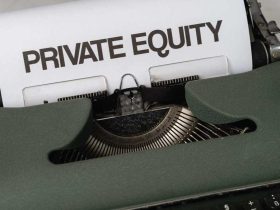Although most people are not very clear about what financial leverage is, the truth is that it can be a great tool to improve your financial situation, especially because it allows you to invest more money than you actually have, by using debt to finance a significant part of the investment.
This translates into a degree of financial leverage that is calculated using a specific formula, which takes into account the invested equity and the amount of debt, thus offering a clear view of the leverage ratio.
What is financial leverage?
But what exactly is financial leverage and what is its purpose? Although semantically it may be misleading, this term is related to the term “lever”, that is, the unlocking or boosting of a financial operation. Specifically, it refers to investments that use part of equity capital and debt to obtain a return.
Financial leverage is used to increase the profitability of investments by allowing investment in larger projects, such as the purchase of a property valued at, say, 10,000 euros more than what could be covered with equity. For example, after one year, a company that uses debt to finance the acquisition of an asset could see how this increase in the value of the asset significantly improves its financial return, provided that the change in interest rates and the interest rate applicable to the debt are properly managed.
In this sense, we would only talk about financial leverage when there is an expected return. Buying a second home to rent it out or sell it for more money in a few years would fall within this concept. In the business field, exactly the same thing happens: we talk about financial leverage when we refer to operations that seek exclusively profitability. And that is the main difference it has with respect to the concept of credit: that the ultimate goal of financial leverage is to obtain a return on those borrowed funds.
In other words, the aim is to obtain money from capital that one does not have. A credit does not necessarily seek to obtain a return on that loan.
In the business world we speak of financial leverage when we refer to operations that seek exclusively profitability.
What are the advantages and disadvantages of financial leverage?
However, it is crucial to understand the advantages and disadvantages of financial leverage, as while it allows you to invest in opportunities that would otherwise be inaccessible, it also introduces a risk that financial operations of this nature entail. The success of a leveraged financial operation depends largely on the profitability obtained exceeding the cost of borrowing, which is not always certain due to market volatility and the possible change in interest rates.
Advantages of financial leverage
- It is not necessary to have 100% equity capital.
- This is a joint venture operation.
- It allows you to get into debt to save yourself from crisis situations
- Increases the potential profitability of invested equity
- Financial flexibility.
Disadvantages of financial leverage
- It generates interest that must be paid regardless of how the transaction turns out.
- There is a possibility of incurring losses.
- It is a very high-risk operation that can lead to insolvency.
- Credit market dependence: The viability of financial leverage depends largely on credit market conditions. In times of financial crisis, access to credit can be significantly restricted, limiting this option.
- Impact on credit rating.
In addition to the inherent risk of the investment and the interest payable, companies must take into account other financial obligations which can increase significantly with the expansion of operations or with the acquisition of new assets.
How is financial leverage calculated?
To calculate the degree of financial leverage, fractions are used, whose divisor (the last number) represents the value of the investment divided by the equity invested in the operation. Let’s imagine, for example, that a company intends to invest 50,000 euros with only 5,000 euros of equity.
The resulting fraction would be 1:50,000/5,000, that is, 1:10. This value represents the financial leverage ratio, which in this case means that one out of every 10 euros invested comes from the company’s cash.
How can financial leverage help my business?
This is a formula for calculating that is especially useful for companies with a shortage of equity but with the ability to obtain credit to make an investment. The objective is always to obtain long-term profitability. That is why there are numerous companies that buy and sell real estate even without using it for their own purposes. It also allows them to invest in other types of assets, on the stock market or by buying shares in another company.
As an example, let’s consider a company that has €200,000 of its own initial capital that it wants to invest. It could invest all of it in an office that costs exactly that price and that, after five years, allows it to achieve a return of 20%, or €40,000, because its sales value has skyrocketed to €240,000 (amount and sign are examples only).
Financial leverage example: tripling profits
Using the leverage formula, the same initial amount (200,000 euros) could be used to buy the entire office building for one million euros. If the increase in the value of the property were identical to the previous example (20%), and with an interest rate of 10% for the 800,000 euros borrowed, the same company could make a profit of 120,000 euros five years later: the property would be sold for 1.2 million euros and the 200,000 euros of initial investment, the 800,000 euros of the loan and 80,000 euros of interest would have to be subtracted from this. In other words, by using leverage, the profits would be tripled by investing the same amount.
Therefore, when calculating financial leverage, it is important to take into account both the growth potential of the acquired asset and the costs associated with borrowing. In the long term, the objective is that the strategic use of financial leverage not only allows investment in larger-scale projects but also contributes to increasing the company’s profitability, always taking into account the risk involved in these operations and planning carefully to mitigate possible financial setbacks.















Leave a Reply